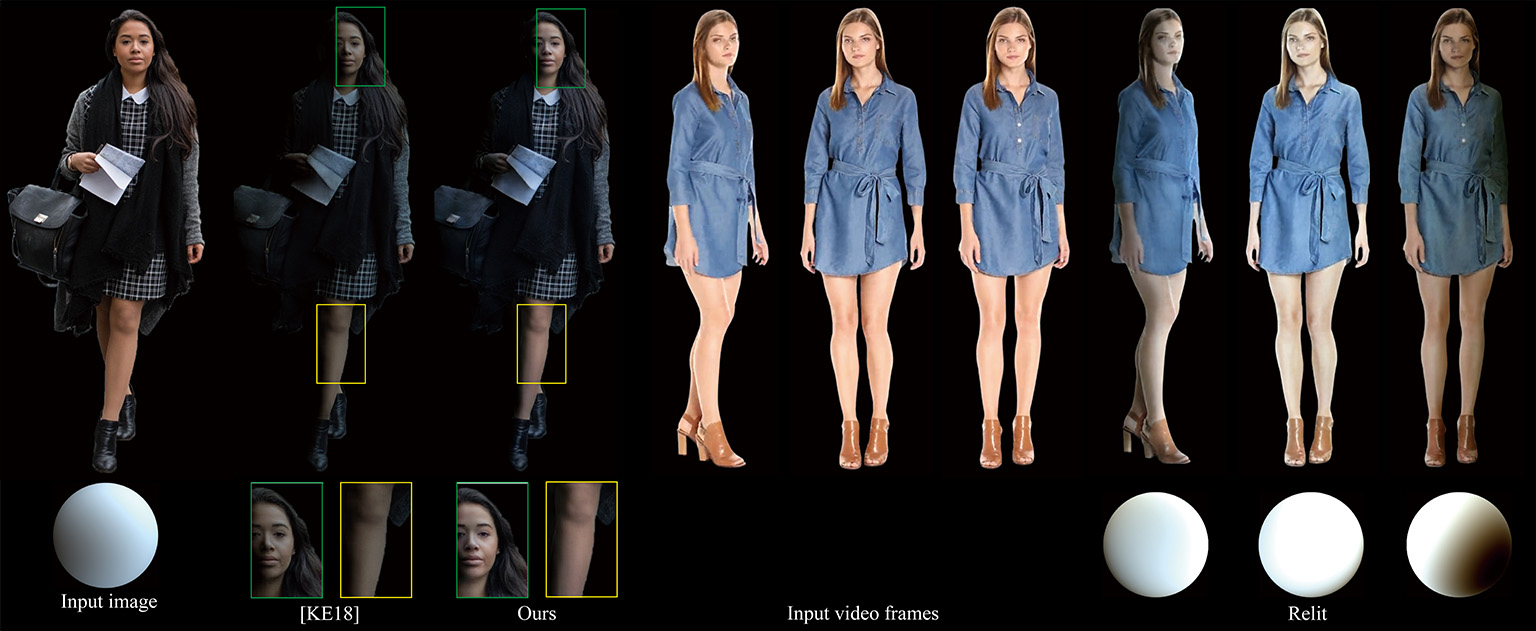Daichi Tajima, Yoshihiro Kanamori, Yuki Endo
University of Tsukuba
Pacific Graphics 2021

Daichi Tajima, Yoshihiro Kanamori, Yuki Endo
University of Tsukuba
Pacific Graphics 2021

The modern supervised approaches for human image relighting rely on training data generated from 3D human models. However, such datasets are often small (e.g., Light Stage data with a small number of individuals) or limited to diffuse materials (e.g., commercial 3D scanned human models). Thus, the human relighting techniques suffer from the poor generalization capability and synthetic-to-real domain gap. In this paper, we propose a two-stage method for single-image human relighting with domain adaptation. In the first stage, we train a neural network for diffuse-only relighting. In the second stage, we train another network for enhancing non-diffuse reflection by learning residuals between real photos and images reconstructed by the diffuse-only network. Thanks to the second stage, we can achieve higher generalization capability against various cloth textures, while reducing the domain gap. Furthermore, to handle input videos, we integrate illumination-aware deep video prior to greatly reduce flickering artifacts even with challenging settings under dynamic illuminations.
Keywords: Image manipulation; Neural networks
@article{tajimaPG21,
author = {Daichi Tajima and Yoshihiro Kanamori and Yuki Endo},
title = {Relighting Humans in the Wild: Monocular Full-Body Human Relighting with Domain Adaptation},
journal = {Computer Graphics Forum (Proc. of Pacific Graphics 2021)},
volume = {40},
number = {7},
pages = {205--216},
year = {2021}
}Last modified: Oct. 2021
[back]